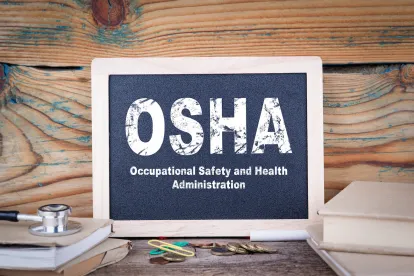When the Occupational Safety and Health Administration (OSHA) rolled out its COVID-19 Healthcare Emergency Temporary Standard on June 10, 2021, it also issued its updated Guidance on Mitigating and Preventing the Spread of COVID-19 in non-healthcare workplaces.
In its previous guidance, published January 2021, OSHA incorporated guidance from the Centers for Disease Control and Prevention (CDC) and suggested strategies that had developed since the onset of the COVID-19 pandemic, along with some new recommendations employers may want to consider adding to their current COVID-19 protocols.
The new guidance updates the former recommendations with new ones, which include:
-
Granting paid time off for employees to get vaccinated;
-
Instructing any workers who are infected, unvaccinated workers who have had close contact with someone who tested positive for SARS-CoV-2, and all workers with COVID-19 symptoms to stay home from work;
-
Implementing physical distancing for unvaccinated and otherwise at-risk workers in all communal work areas;
-
Providing unvaccinated and otherwise at-risk workers with face coverings or surgical masks, unless their work task requires a respirator or other personal protective equipment;
-
Educating and training workers on workplace COVID-19 policies and procedures using accessible formats and in language they understand, including:
-
Basic facts about COVID-19, including how it is spread and the importance of physical distancing (including remote work), ventilation, vaccination, use of face coverings, and hand hygiene; and
-
Workplace policies and procedures implemented to protect workers from COVID-19 hazards;
-
-
Suggesting that unvaccinated customers, visitors, or guests wear face coverings;
-
Maintaining ventilation systems;
-
Performing routine cleaning and disinfection;
-
Recording and reporting work-related COVID-19 infections and deaths as required by OSHA recordkeeping standards;
-
Implementing protections from retaliation and setting up an anonymous process for workers to voice concerns about COVID-19-related hazards; and
-
Following all applicable mandatory OSHA standards.
Importantly, the new guidance reversed course on prior guidance advising employers to require vaccinated workers to follow the same protective measures as unvaccinated workers. Now that CDC has found that vaccinations are effective in preventing the spread of COVID-19, the agency advises that fully vaccinated individuals no longer need to wear face coverings or practice physical distancing in most settings.
There are limitations to relaxed protective measures for vaccinated individuals. First, the agency cautions that employers and individuals must continue to follow existing requirements of federal, state, local, tribal, or territorial laws, rules and regulations, including local business and workplace guidance. Second, OSHA warns that individuals who are at higher risk because they have certain medical conditions that make them more susceptible to COVID-19 should continue to wear face coverings, practice physical distancing, and undertake protective measures, even after vaccination. Finally, OSHA recommends continued protective practices (including face coverings and physical distancing) for all individuals in public transportation settings, regardless of vaccination status.



 />i
/>i

